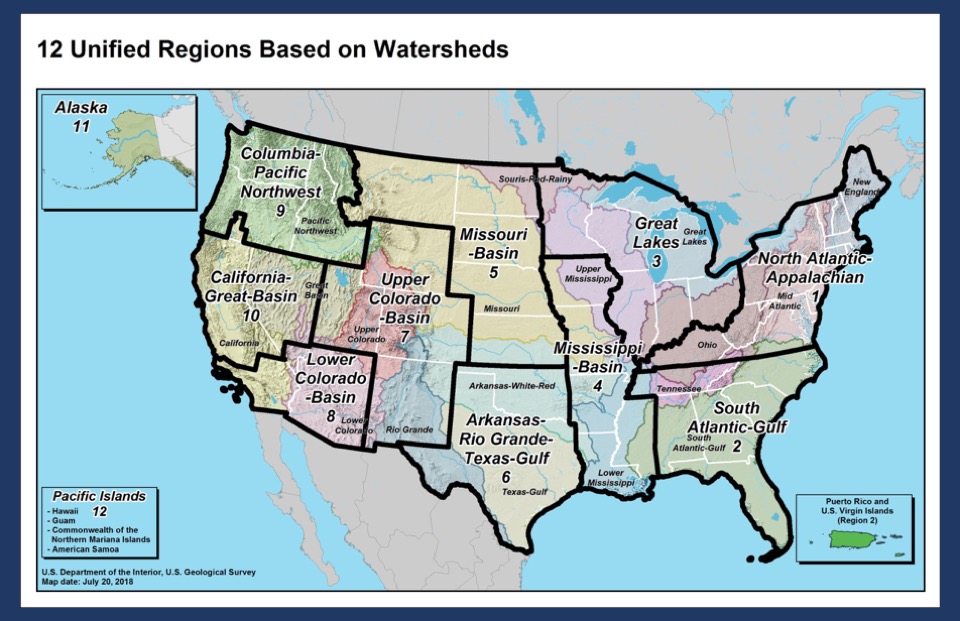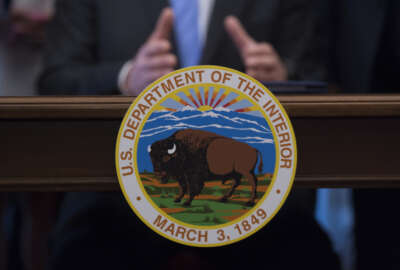
Interior moving forward with some reorganization plans, without help from Congress
Interior Secretary Ryan Zinke says the agency's Senior Executive Service (SES) members will be the "architects" of his vision to create 12 new unified regions.
Though Congress has been slow — if not nearly silent on the matter — the Interior Department is moving forward on its own with some of its plans to reorganize.
The department on Wednesday announced its plans to establish 12 new unified regions across all of Interior’s bureaus, except those that fall under the assistant secretary of Indian Affairs. These new regions will guide how Interior manages its resources, makes decisions and solves problems, the agency said.
Currently, Interior has eight bureaus that manage its responsibilities using regional structures across 49 regions with varying geographic guidelines. The Office of Management and Budget proposed a similar regional realignment of Interior in its governmentwide reorganization plan.
Interior Secretary Ryan Zinke will tap its Senior Executive Service (SES) members to be “the architects of this effort,” according to a letter he sent Wednesday to the agency’s executives, which Federal News Radio obtained.
SES members in each of the new bureaus will form new regional leadership teams. Regions that don’t have an SES member in a bureau can tap a senior executive from other areas or in Washington, D.C., to join a “virtual” regional leadership team.
Within 30 days, Zinke wants each SES regional team to identify one of its own to serve as “regional facilitator” to lead these groups.
Those regional facilitators will explore “how to collectively organize the activities of the unified region in six areas: collaborative conservation, recreation, permitting, acquisition, human resource management and information technology management,” Zinke told the SES. “Regional leadership teams will then identify key personnel in each region for the six areas.”

These SES regional teams will review current operations and develop “future state” options for their unified region. These documents will be used to select the Interior regional directors and establish a process rotating these executives to other areas, Zinke said.
“The [Interior regional director] duties for each unified region will be similar, but geographic areas of the country will require slightly different skills and experience depending on the priority issues for the unified region,” Zinke wrote.
Interior’s career senior executives had previously said they’ve felt “left in the dark” about the agency’s reorganization plans, and some career executives had said they had “absolutely no involvement whatsoever” in crafting the original vision.
Zinke and top Interior leaders have been working on the agency’s reorganization plan for more than a year. Interior, along with most other agencies, presented its ideas to the Office of Management and Budget last September.
In January, Zinke offered a preview of his vision to create broad management regions across the country and meeting with state governors and other stakeholders. According to Interior, it invited career SES from across the country to attend a series of planning meetings in Washington.
Interior has no immediate plans to move personnel
Zinke touted the creation of the 12 new unified regions as a “framework for a new way of doing business,” according to his letter to the SES.
But Interior’s plans appear to be scaled back, however, as Congress hasn’t yet approved requests to reprogram or rearrange the department’s functions. And because Congress hasn’t approved a full-scale Interior reorganization, few employees have immediate plans to relocate. Relocating employees to lower-cost regions across the country was one of Zinke’s priorities for reorganization, which he described to Congress back in March.
“We are not reprogramming funds or making other specific organizational changes in the bureaus at this time,” the department said Wednesday in an email announcing the new regions. “The department does not anticipate mission, budget or personnel impacts as the twelve unified regions stand up virtually and begin operation.”
Zinke also told employees there would be no “office or personnel relocations” during the initial implementation of the 12 new regions. The current reporting structure stays as is, he wrote in an Aug. 29 letter to employees.
“The implementation of these new unified regions will be a thoughtful, department-wide effort driven by leadership and employees in the field,” Zinke wrote in the letter to employees. “This
ground-up approach will tap into the expertise and experience of you — our most dedicated career
civil servants. With these changes, we fully expect to be able to deliver our services more
efficiently and effectively.”
According to a series of frequently-asked questions on the department’s website, Interior has “absolutely no plans” for a reduction in force (RIF). It’s not ruling out Voluntary Early Retirement Authority (VERA) or Voluntary Separation Incentive Payments (VSIP) if the Office of Personnel Management authorizes them, but Zinke’s message seems to indicate the agency doesn’t plan to offer VERA/VSIP immediately.
OMB included Interior’s vision in the reorganization plan it unveiled to the public and submitted to Congress back in June.
But in its 2018 omnibus, Congress indicated that agencies shouldn’t use funds to “increase, eliminate, or reduce funding for a program, project, or activity as proposed in the president’s budget request for a fiscal year until such proposed change is subsequently enacted in an appropriation act.”
Both the House and Senate have included a similar provision in their 2019 appropriations bills.
Copyright © 2025 Federal News Network. All rights reserved. This website is not intended for users located within the European Economic Area.
Nicole Ogrysko is a reporter for Federal News Network focusing on the federal workforce and federal pay and benefits.
Follow @nogryskoWFED






